Buddhism is, at its depths, a grand philosophy of life. It encourages all sentient beings to transcend life’s sufferings by casting away desires and mental afflictions and thereby embark on a journey to attain the ultimate level of spiritual understanding. Buddhists refer to this as the state of “Enlightenment”. As each of us treads this path, we must take responsibility for our own actions and choices, even beyond our current lifetime, while practicing compassion to all living things.
It is no wonder that, since its introduction to East and South Asia, Buddhism has flourished in many countries over long periods in history. The International Buddhist Society is proud to play a part in Buddhism’s fast-growing popularity and acceptance in Western culture. We will continue to strive for Enlightenment, while helping others, both locally and internationally, to do the same.

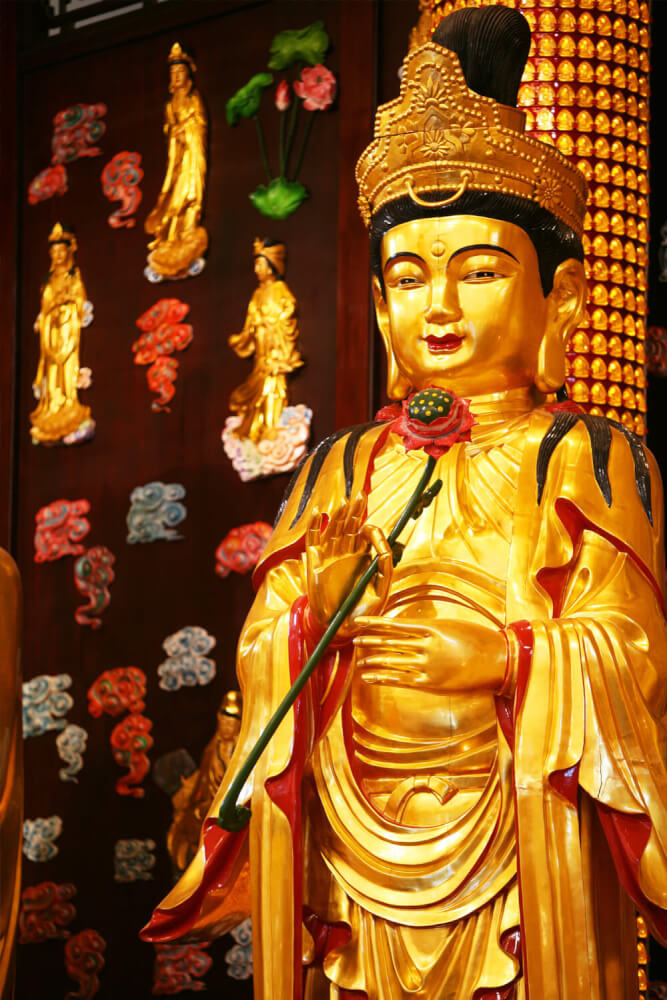
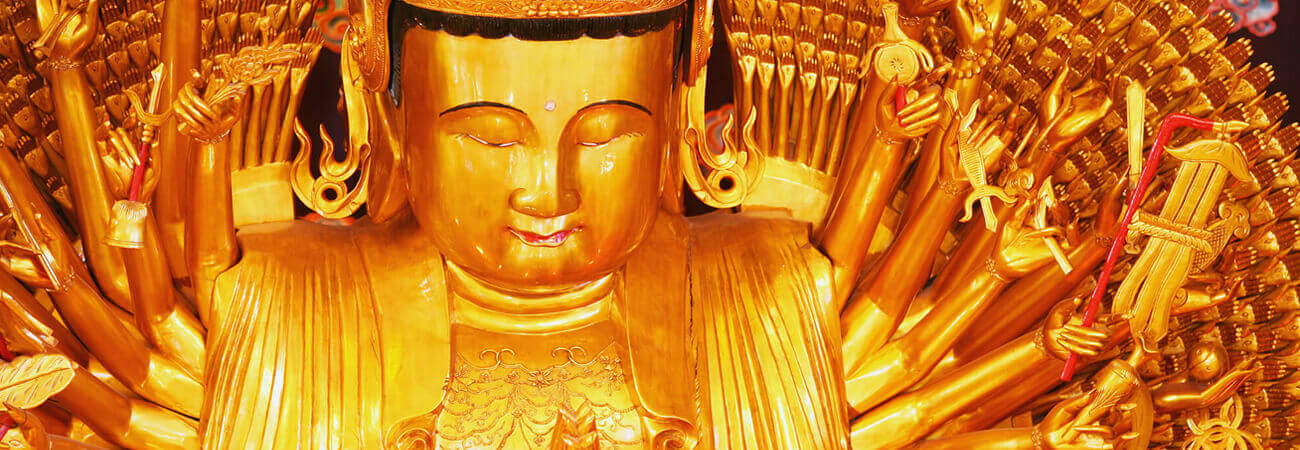


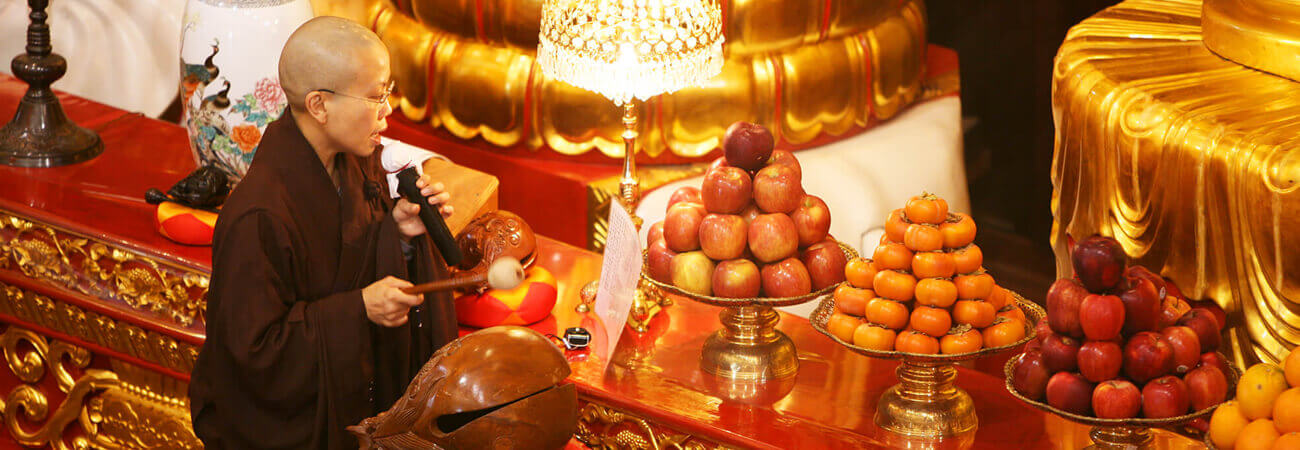
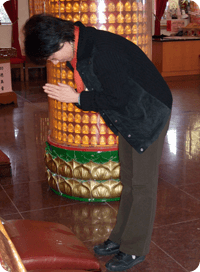 When worshippers enter a room in which there is a Buddha statue, they put their palms together and bow, to show their highest respect for the Buddha and His teachings. The proper term for the bowing is prostration. The individual prostrates three times by facing the Buddha or Bodhisattva and kneeling – with palms turned upward – on a kneeling stool. The open palms represent wisdom and compassion; during the first prostration, the turning out of one hand symbolizes cultivating wisdom internally, while the movement of the other represents the outward offering of compassion.
When worshippers enter a room in which there is a Buddha statue, they put their palms together and bow, to show their highest respect for the Buddha and His teachings. The proper term for the bowing is prostration. The individual prostrates three times by facing the Buddha or Bodhisattva and kneeling – with palms turned upward – on a kneeling stool. The open palms represent wisdom and compassion; during the first prostration, the turning out of one hand symbolizes cultivating wisdom internally, while the movement of the other represents the outward offering of compassion.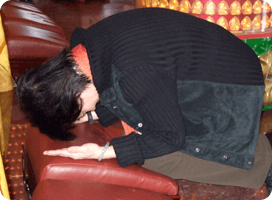 The second prostration indicates the Buddha or Bodhisattva’s bestowal of wisdom
The second prostration indicates the Buddha or Bodhisattva’s bestowal of wisdom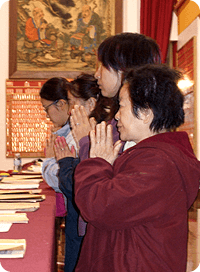 When Buddhists chant, their speech is pure and free of lies, curses, slander, and so on. Chanting is the uttering of the Buddha’s teachings, and thus it trains our thoughts, through repetition, to be visions of benevolence, perseverance, self-discipline, and charity.
When Buddhists chant, their speech is pure and free of lies, curses, slander, and so on. Chanting is the uttering of the Buddha’s teachings, and thus it trains our thoughts, through repetition, to be visions of benevolence, perseverance, self-discipline, and charity.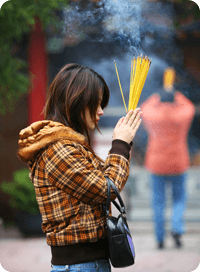 Lighting or burning incense is a gesture of paying one’s highest respects to the Buddha. The lit incense prompts us to follow the Buddha’s practices and teachings, and trains our minds to focus on one single object during meditation. The act of lighting incense reminds us to free ourselves from the
Lighting or burning incense is a gesture of paying one’s highest respects to the Buddha. The lit incense prompts us to follow the Buddha’s practices and teachings, and trains our minds to focus on one single object during meditation. The act of lighting incense reminds us to free ourselves from the

 Meditation is about the mind and its purification. It is a technique for developing the right concentration which can only be acquired through direct experience, and not from reading alone. The purpose of meditation is to calm the wandering of our minds. To calm the mind is the first step, Samadhi. We focus on an object and direct our monkeying or false minds so that it is no longer engaged in egoistical thought. Vipassana or self-contemplation follows. This is when we put our minds under control and contemplate introspectively.
Meditation is about the mind and its purification. It is a technique for developing the right concentration which can only be acquired through direct experience, and not from reading alone. The purpose of meditation is to calm the wandering of our minds. To calm the mind is the first step, Samadhi. We focus on an object and direct our monkeying or false minds so that it is no longer engaged in egoistical thought. Vipassana or self-contemplation follows. This is when we put our minds under control and contemplate introspectively.